How to Go Green Now

Every boat show -- particularly in Europe -- sees new powerboats coming onto the market claiming to have green credentials. The variety of concepts being promoted emphasizes the many different ways there are to go "green." There are a lot of alternative technologies out there that point the way to greener yachting. Let’s take a look at the concept.
New, Lower Emission Engines
On a grand scale, going green means we are trying to reduce global warming by reducing harmful emissions from the exhaust, which means reducing hydrocarbons and other noxious gases. The EPA has mandated certain emission criteria. Engine manufacturers are meeting these criteria essentially by getting rid of old engines and making new ones smaller that burn less fuel, and burn it more completely.
Sterndrives. For example, GM is no longer building the big-block engines. Further, they’ve gone direct in-the-cylinder fuel injection to make combustion more controllable and complete. Those GM gas engines are being marketed by Volvo Penta as its marinized sterndrive engines. They are the lowest emission gas inboard and sterndrive engines. (Mercury is sticking with the old technology for its MPI sterndrives and making its own blocks. Mercury not only still builds the old 8.1 L big block, now called an 8.2 L engine, as well as an 8.6 L engine used in its Racing Division.)
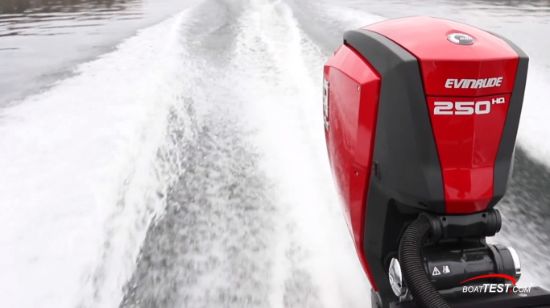
Outboards. Evinrude’s G2 engine is the cleanest outboard engine on the market by a significant margin, even though it is 2-stroke. (Both Yamaha and Mercury no longer sell their 2-stroke engines in the U.S., and now sell them mostly in countries with low or no emission requirements.) Ironically, today Evinrude’s 2-stroke has lower emissions than 4-stokes, which is why those brands are not talking about being green.
Diesels. The latest “clean” diesels will conform to EPA requirements and they will reduce the number of emissions. If you are in the market for a new diesel-powered boat, then it will automatically have greener engines. To meet future emission standards, we are going to see engines with more and more complications, and of course more and more cost.
Hybrid Systems. Much of the focus of so-called green yachts is on hybrid systems. In most hybrid systems, there is a combined generator and electric motor included in the drive train between the engine and the propeller. This can generate electric power when the diesel engine is running, and this power is fed to a large bank of batteries that stores the electric power until needed. This bank of batteries can then supply electric power back to that generator/motor when it is needed for propulsion so the diesel engine can be switched off and you have wonderful silent propulsion with no emissions.
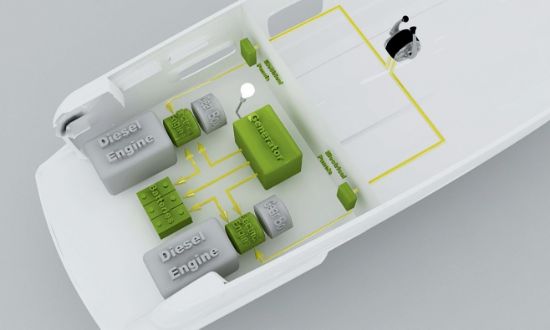
All-Electric Propulsion. Several boats are coming onto the market now that only have electric propulsion with power supplied by batteries. These are mostly smaller boats where the power sums add up and you can get useful performance. There are a few boats in this category where the electrical power comes from solar panels, so these boats are green.
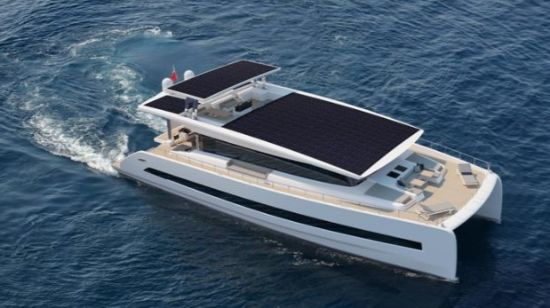
You won’t break any records in terms of performance, but the builders claim that you can cruise the oceans in these boats with the batteries holding enough power to see you through the night. Without exception, these boats are all catamarans that offer low resistance at cruising speeds.
At European boats shows, we see runabouts that are completely powered by batteries. And, they can go remarkably fast, say 60 mph, but only for a few minutes. The best model we have seen was said to be able to go for six hours and 6 knots.
Battery capacity is the limiting factor here. Battery technology is constantly improving, spurred on by road transport developments -- although there is still some way to go before this type of boat becomes a realistic green option.
Speed and Hull Design
The easiest way to reduce emissions is to reduce speed. In one example, an 80-footer would burn 119 gallons (450 L) per hour at 16 knots. But ease back to 10 knots and the consumption drops to a much more efficient 21 gallons (80 L) per hour.
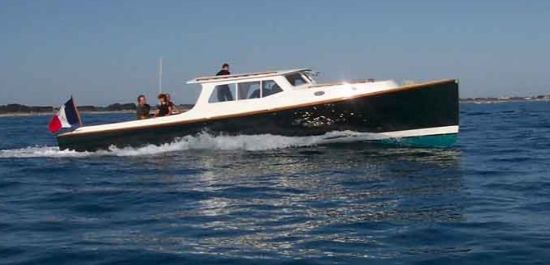
The demand for economy is leading designers and builders to consider some novel hull forms. The long thin hull form is one of the most efficient for a displacement hull, but the penalty comes with trying to squeeze accommodations into such a hull. The demand for interior volume has produced some very inefficient hull designs. To go green, we need to look at hull design carefully.
For a planing hull, a hull with a shallow V will be more efficient than one with a deep V, but the ride will be more uncomfortable in smaller boats. However, hull design looks so far removed from reducing emissions that it is rarely considered.
Renewables
Solar power and wind energy are free sources of power, but they can be expensive to harness. Solar panels require a lot of space onboard which may compromise the design. We are seeing some yachts fit solar panels. In the main, this is to provide supplementary power for battery charging rather than for propulsion. Some yachts are appearing to rely entirely on solar power, but their applications are limited.
Skysails. Sailing yachts have harnessed wind power for hundreds of years. For motoryachts, there are systems like Skysails that can be used to exploit the power of the wind. This is a soft, kite-like sail installed at the bow of a motoryacht. When deployed, it is like a parachute that soars in the sky, generating a significant pull.
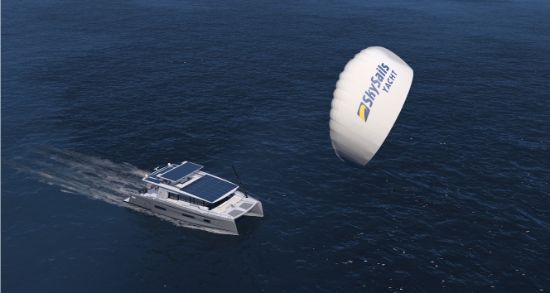
A suitable sail for a motoryacht can generate over 8 metric tons of pull. But of course, they only work in following or quartering winds. These sails are already in use by commercial vessels. They can be retro-fitted as well as fitted to new designs. Skysails has developed two dedicated designs to harness the wind power in this way.
Of course, if you want to sail solely on renewables, buy a sailboat where the wind is free and offers a viable means of propulsion.
Alternative Fuels
If you look at the car market, you will see the possibilities for alternative fuels. Biodiesel, methanol, hydrogen, and LPG (liquified petroleum gas) and LNG (liquified natural gas) are all possible cleaner fuels and they may have a place in yachts of the future. Some of these fuels such as biodiesel, LPG and LNG can work with slightly modified diesel engines. Methanol and hydrogen are probably best when being used in conjunction with fuel cells to generate electricity.
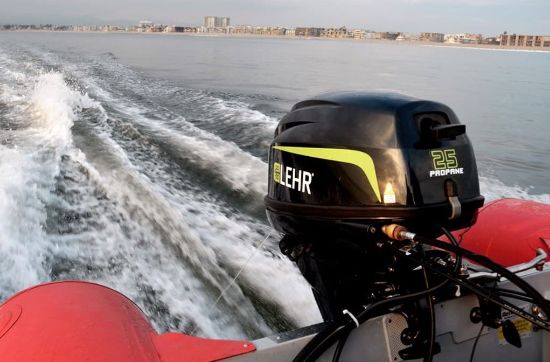
There are vessels out there running on all of these fuels, mainly on an experimental basis. The limited hours of use of the average leisure boat could make the additional cost unviable. It is the availability of this fuel that could be the crucial part with specialized refueling stations few and far between.
Conclusions
Going green is not easy and it is not cheap. There are many potential solutions to going green but finding the right solution in the right package is not be easy. To a certain extent, you will be forced to go green in the future because yachts will have to fit the next generation of clean diesel engines that will be demanded by law.
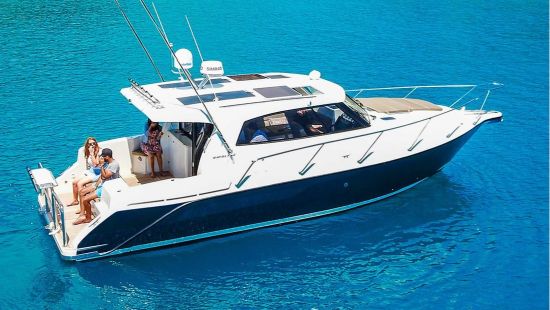
The Best Solution. There is a very simple solution for owners of existing yachts to reduce their carbon footprint and that is to operate their yachts at a slower speed. Reduce the speed and fuel consumption drops along with all types of emissions. This is the way forward for motor yachting. It comes as no surprise that around 50% of the new yachts coming onto the market in the larger sizes are based on a slower displacement or semi-displacement hulls with modest engine power.
Slower speeds are probably the wave of the future in boating, and there is nothing wrong with that. That way, all owners can do their bit to save the planet. When you think about it, that is exactly what yachting should be about, living life at a slower pace.